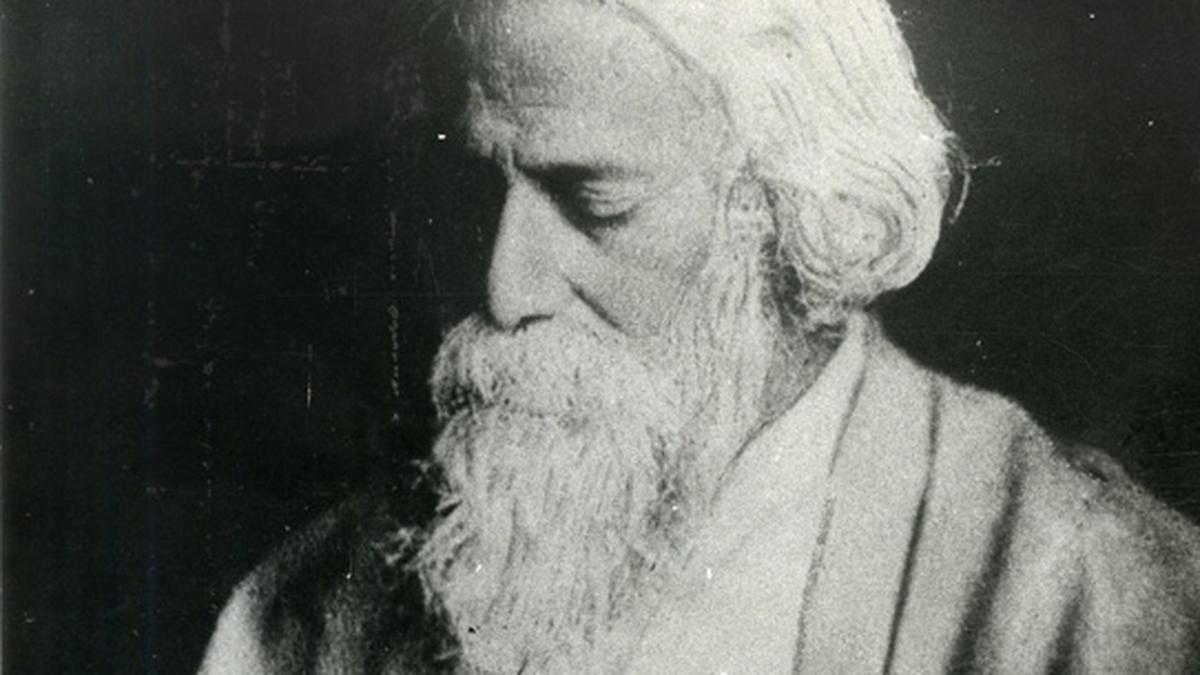
A new audio series celebrates the timeless appeal of Tagore’s Gitanjali
The Hindu
Delving deep into Tagore’s Gitanjali through music
One book that continues to be discussed, translated and read 114 years after it was published in India is Rabindranath Tagore’s Gitanjali. The Bard of Bengal won the Nobel Prize for Literature in 1913 but he was known much before that as a popular writer of short stories, novels, poetry, dramas and songs. A voluminous collection of 157 poems, Gitanjali has stirred people’s imagination like no other. Undoubtedly a literary gem, it has inspired generations of writers and artistes with the way Tagore has expressed his thoughts and emotions through the verses. Santhosh Kana, a teacher and writer, recently launched an audio series ‘Tagore’s Gitanjali — A Musical Pilgrimage’ combining 18 poems. His soothing narration is backed by melodious sitar music. He spent three to four years choosing poems and appropriate ragas for each. In an interview, Santhosh shares the excitement of putting together this series based on the book he grew up reading.
What inspired you to create an audio series and how did you think of using Indian classical music?
Ever since I began reading Gitanjali in my school days, I was instantly drawn to it, and was able to connect with the poetic and philosophical depth of the work. I wanted to share this with people and found music as one of the most natural tools for this expression. Hence, the choice of the sitar for background score. The instrument like the book is distinctly Indian.
Tagore’s writings have a lyrical richness to them, Gitanjali is a fine example. The Bengali original is quite musical and Tagore had even prepared the notations for each poem. Rabindra Sangeet, the school of music, started by Tagore is an incredible confluence of musical tributaries from varied lands and languages. The initial effort was to understand the emotions evoked by each poem, the mood and imagery in it. Crafting the background music to suit the poem’s structure and flow and its emotional intensity was the main part of the process.
What elements do you consider essential in maintaining the integrity of the original?
First and foremost is my subjective experience of the text. That’s why each reader’s journey is different; it opens a new door to the work. For me, Gitanjali has a meditative and deeply reflective tone throughout and therefore I have decided to capture and communicate that in my series. I am overwhelmed by the response to my approach of blending music, voice and visuals. You know how scrupulous Santiniketan and Tagore lovers can be. One of the best comments I have received was from Amartya Mukherjee, faculty of Drama Department at Visva Bharati. He said, “This is an excellent example of music therapy”. I would like to give special credit to Anandu Pai, who did the music production and Paulson KJ, who played the sitar.
Could you share the thought process behind selecting specific poems? What drew you to these pieces?











